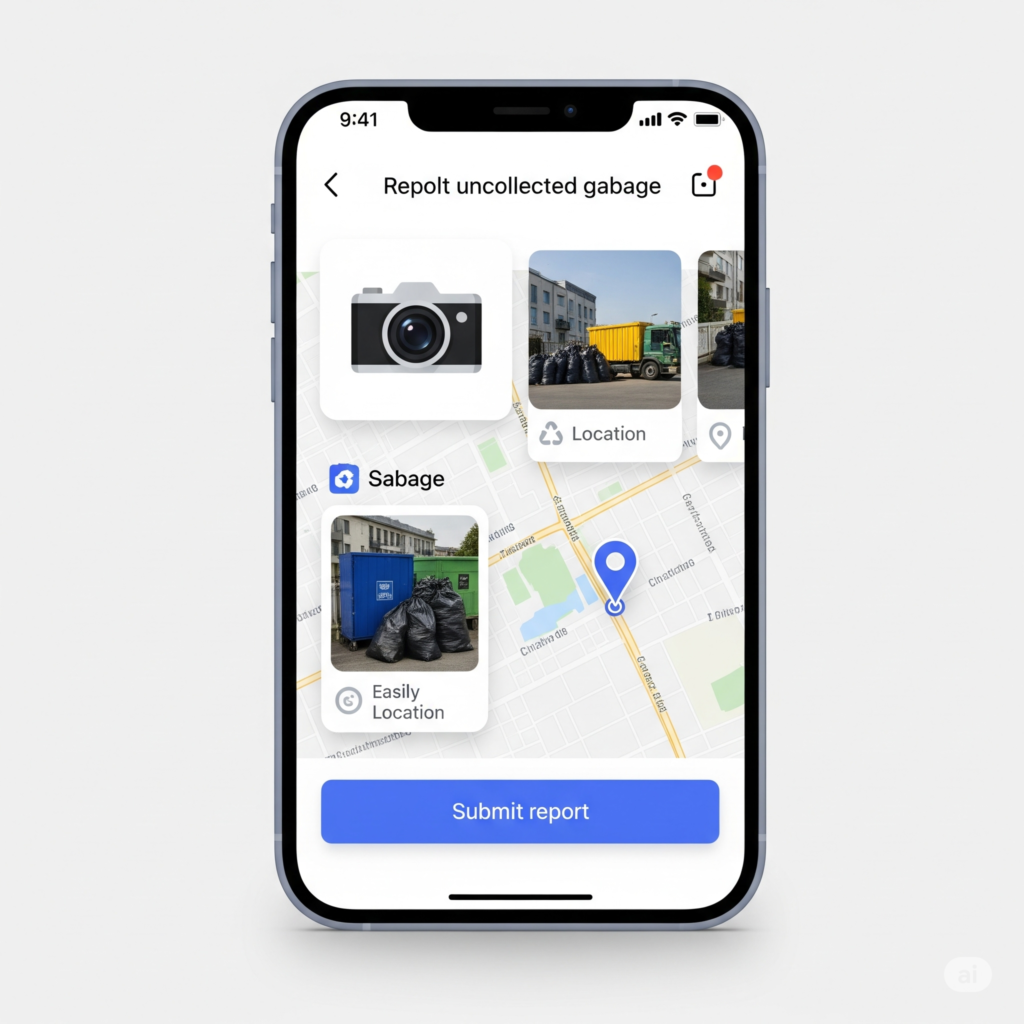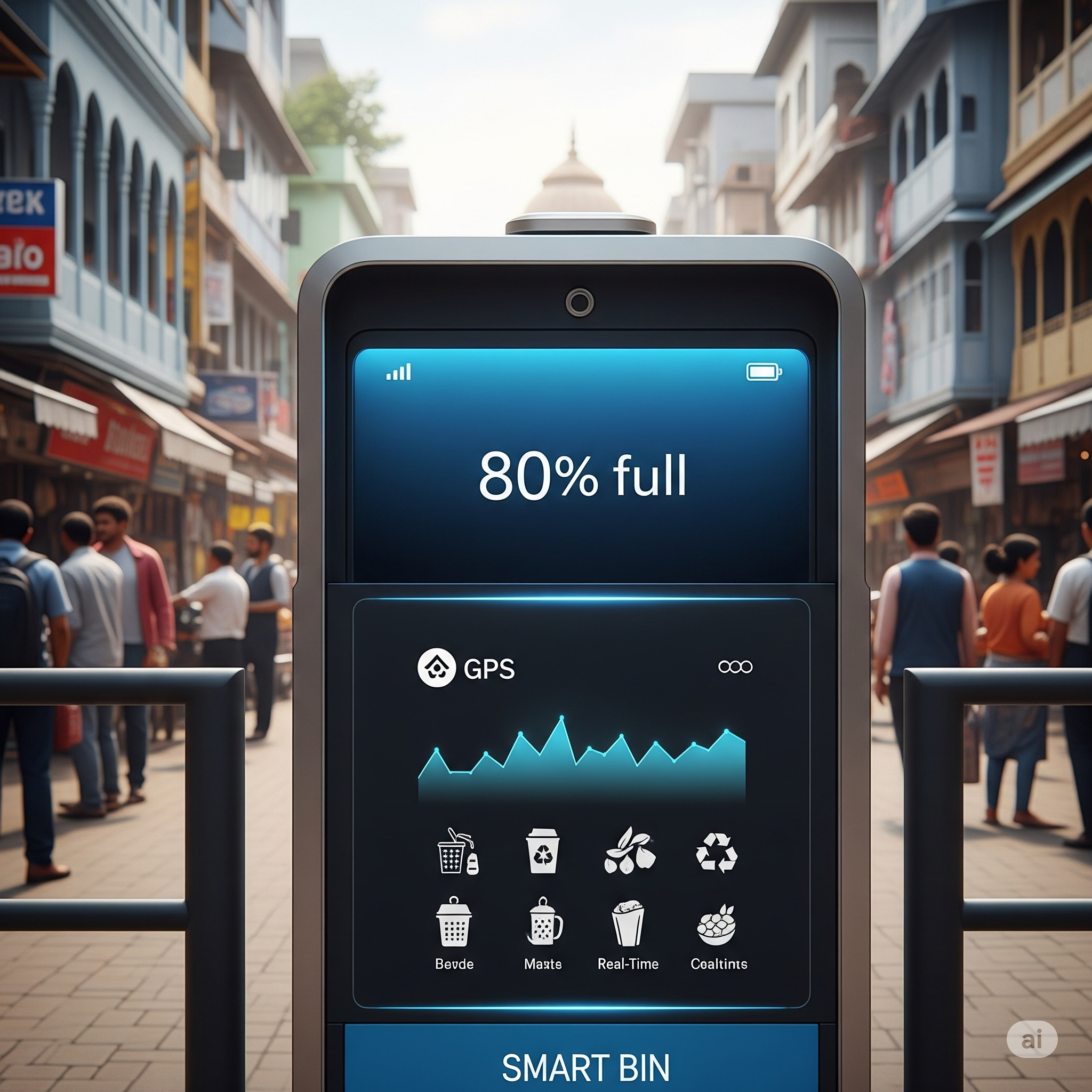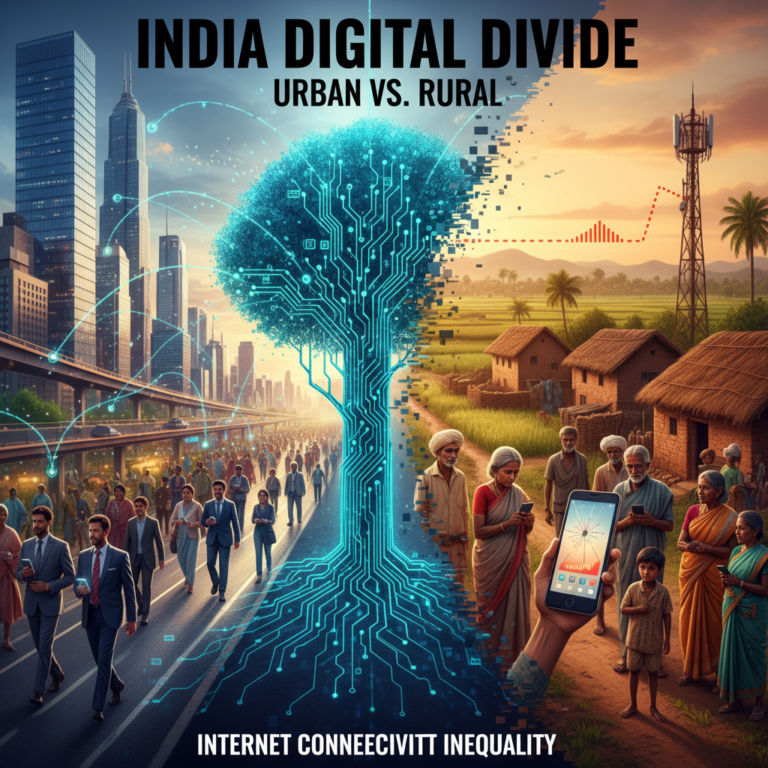A Digital Broom for a National Problem
India generates over 160,000 tonnes of municipal solid waste daily, and nearly 70% remains untreated or poorly managed. Overflowing landfills, unsegregated waste, and outdated logistics choke our cities—and with rising urbanization, the situation is only getting worse.
But a new wave of digital technologies—AI, IoT, data analytics, civic apps, and automation—is changing the game.
From Bengaluru to Indore, from startups to civic bodies, a digital clean-up is quietly transforming how India confronts its garbage crisis. This blog dives deep into how tech can turn waste into a solvable problem, not a growing monster.
🧠 The Core Problems in India’s Waste Ecosystem
Before understanding how tech helps, here’s what’s broken:
| Issue | Description |
|---|---|
| ❌ Poor Segregation | Wet and dry waste rarely separated at source |
| 🚚 Inefficient Logistics | Manual collection routes lead to overflows and missed pickups |
| 🧴 Data Deficiency | No real-time waste tracking or auditing |
| 🏞️ Overflowing Landfills | Most cities exceed their landfill capacity |
| 🤝 Lack of Transparency | Citizens unaware of waste movement post-disposal |
⚙️ How Tech Is Changing the Waste Game
1. 🌐 IoT Sensors for Smart Monitoring
Smart bins equipped with sensors and GPS track fill levels, temperature, and odor. They send real-time alerts to municipal trucks—ensuring waste is collected before it overflows.
Real Example:
Indore Smart City Project deployed over 1,000 smart bins integrated with IoT to optimize waste pickup schedules—contributing to its top ranking in Swachh Bharat surveys.
2. 📱 Civic Engagement Apps & Platforms

Apps empower citizens to report garbage pileups, missed pickups, or illegal dumping.
| App | Features |
|---|---|
| Swachhata App (Govt.) | Report sanitation issues via photo + GPS |
| Recykal | Connects homes and businesses with verified waste recyclers |
| WeVOIS | Private civic-tech app used in cities like Kota for garbage monitoring |
🧍 Impact: These platforms crowdsource waste accountability, empowering residents to become watchdogs.
3. 🧠 AI-Powered Waste Sorting
Manual segregation is inefficient and risky. AI + computer vision can:
- Detect and separate plastics, organics, paper
- Reduce human involvement in hazardous waste zones
- Improve recycling rates by up to 25–30%
Startup Spotlight:
TrashCon (Bengaluru) has developed “TrashBot”, an AI-powered sorting unit that automates segregation of mixed municipal waste with up to 85% accuracy.
4. 📊 Data Dashboards & Predictive Analytics
Cities like Pune and Hyderabad use real-time dashboards that analyze:
- Waste generated per zone
- Collection efficiency
- Peak dumping hours
- Future waste load forecasting
This data helps optimize manpower, truck routes, and recycling center loads—saving costs and reducing delays.
5. 🚛 RFID & GPS-Enabled Collection Vehicles
RFID tags on bins and GPS on trucks ensure:
- No false pickups
- Route compliance
- Efficient tracking of garbage flow from home to landfill or recycling plant
Real Example:
Pune Municipal Corporation integrated RFID into nearly 300,000 bins and GPS into 500+ trucks to increase route transparency and reduce fuel waste.
🧪 Bonus: Emerging Tech Trends in Waste Management
| Tech | Impact |
|---|---|
| Blockchain | Transparent waste chain from generation to disposal |
| Drones | Survey illegal dumpsites, monitor landfill sprawl |
| Robotics | Sorting at Material Recovery Facilities (MRFs) |
| Digital Twin Models | Simulate waste flows to improve urban design |
🌿 Waste-Tech Startups Leading India’s Cleanup
| Startup | Innovation |
|---|---|
| Recykal | Waste marketplace connecting producers, recyclers, bulk generators |
| Blue Planet | End-to-end waste analytics + AI segregation |
| Bintix | Uses QR codes and app to track household waste and reward segregation |
| Sampurn(e)arth | Decentralized waste management + tech for rural areas |
| Hasiru Dala Innovations | Integrating waste pickers into tech-driven waste chains |
🚀 Impact: Real Numbers, Real Change
| Metric | With Tech | Without Tech |
|---|---|---|
| Waste pickup accuracy | 92–95% | 60–70% |
| Segregation at source | 70%+ | <30% |
| Fuel used per route | ↓ by 20–25% | Unoptimized routes |
| Citizen reporting response time | <24 hrs | 3–5 days |
In Indore, Surat, and Navi Mumbai—digitization has directly contributed to Swachh rankings, landfill reduction, and operational cost savings.
🧱 Challenges That Remain
Despite these innovations, gaps persist:
- Cost of implementation for Tier-2 & rural cities
- Digital illiteracy among municipal workers
- Poor integration between private startups and government bodies
- Lack of maintenance for installed tech (non-functional sensors, outdated apps)
⚠️ Digital solutions are only as effective as the systems that support them.
🧩 The Way Forward: What India Needs
- Public-Private Tech Collaborations
– Leverage startup agility + civic scale - Pan-India Waste Tech Mission
– Like Digital India, but for circular waste systems - Training + Capacity Building
– Educate sanitation workers, officers, and citizens in using tech tools - Policy Push for Data Transparency
– Open dashboards, API-enabled platforms for citizen feedback
🧠 Final Thoughts: Clean India Needs Smart India
The solution to India’s waste crisis won’t come only from brooms—it will come from binary code, sensors, satellites, and citizen apps. With the right investment in digital infrastructure and grassroots education, India can shift from being the world’s 3rd largest waste generator to a global model of sustainable tech-led waste management.
💬 “In the digital age, garbage is not just a sanitation issue—it’s a data problem. And data can be solved.”









+ There are no comments
Add yours